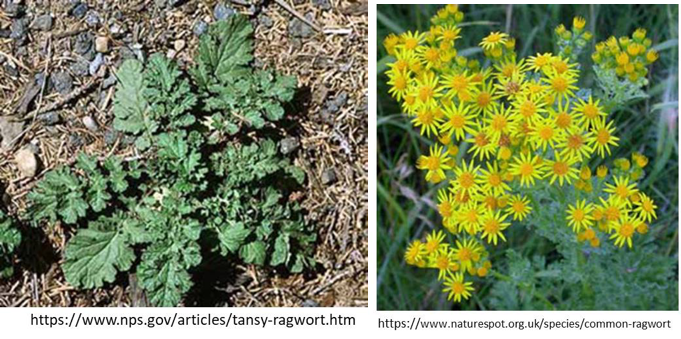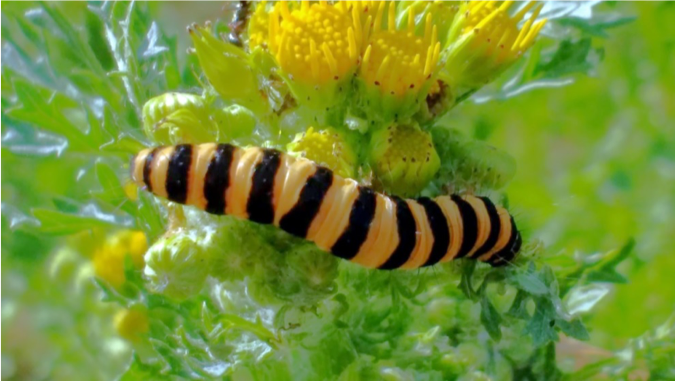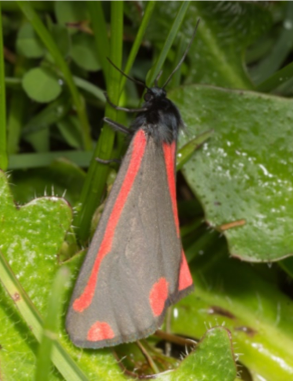Nature Nugget – October 18, 2018
The Rise and Fall of Tansy Ragwort
By Staffan Lindgren
At the September meeting, Michael Stebbings described the scourge of giant hogweed, a plant we can surely do without. I am going to discuss another invasive weed, Tansy ragwort, Senecio jacobaea, a native to Europe and eastern Asia. Most of you would have seen this plant as it is common around Nanaimo. Tansy ragwort was actually first reported in North America in British Columbia in 1913. Its invasive range stretches from southern Vancouver Island to California in western North America, but it is also widespread in eastern North America.
Tansy ragwort can grow as a biennial, perennial or winter annual. It is not an unattractive plant, with a delicate rosette of leaves from which a 2-4 foot tall stalk with numerous yellow flowers will develop.

Tansy ragwort
Tansy ragwort prefers cool, moist climates, and light, well-drained soils. It can rapidly infest meadows and pastures as it has enormous reproductive potential, with individual plants able to produce as many as 175,000 seeds under favourable conditions. Mowing encourages vegetative reproduction from root and plant fragments. This is a problem, as plants contain pyrrolizidine alkaloids, which are very toxic when ingested by to livestock, particularly cattle and horses. In addition, nectar from Tansy ragwort contains the alkaloid, which can contaminate honey, making it unsuitable for marketing. Some alkaloids you may be more familiar with are powerful drugs like morphine and quinine, and poisons like atropine and strychnine, so you can see the problem.
In the early 1960’s parts of Vancouver Island had become severely infested by Tansy ragwort. Among other problems, cattle at a farm in south Nanaimo were getting sick. In an effort to control the invasive plant, several biological control organisms were introduced. One of these was the moth, Tyria jacobaea, which was first released in 1962. The caterpillars of this attractive moth feed on the plant, sequestering the alkaloids, which they can tolerate and use as their own defense. They advertise this by bright orange and black (aposematic or warning ) coloration. These introductions reduced, but did not stop plant reproduction, so three additional biocontrol agents were released from 1968 and 1991.
Of particular interest to us in Nanaimo was that the moth, the common name of which is Cinnabar moth, became extremely numerous in south Nanaimo. Thus, this valley area was named Cinnabar Valley, and the cattle farm mentioned above is now Cinnabar Valley Farm, although they no longer keep cattle!

Caterpillar of Cinnabar moth

Cinnabar moth
For more information about Tansy ragwort, visit bcinvasives.ca.
